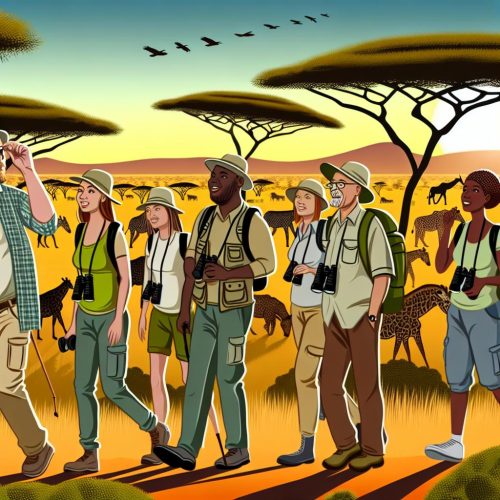Understanding Walking Safaris with Local Guides
Walking safaris have emerged as a fresh and engaging approach to exploring the natural wonders and wildlife habitats across diverse regions globally. Unlike the conventional vehicle-based safaris, walking safaris offer participants a chance to become a part of the environment, appreciating the ecosystems more intimately. This immersive experience is often guided by local experts, who bring a profound understanding of the landscape, wildlife behaviors, and cultural narratives to the journey.
The Role of Local Guides
Local guides are indispensable to walking safaris, contributing their extensive expertise for a richer experience. Their knowledge is crucial for several reasons:
1. **Comprehensive Understanding**: Local guides possess deep insights into the geographical area, enhancing the educational aspect of the adventure. Their guidance surpasses mere animal spotting; it includes interpreting ecosystems, identifying plant species, and recognizing geological formations that form natural landmarks.
2. **Ensuring Safety**: Safety remains a cardinal concern during walking safaris. Local guides are adept at navigating various terrains safely, interpreting animal behavior skillfully to avoid any dangerous situations. Their training equips them to handle emergencies efficiently, ensuring the well-being of participants.
Benefits of Local Expertise
Employing a local guide in walking safaris presents several noteworthy benefits:
1. **Accurate Wildlife Tracking**: Local guides often have a robust network comprising other guides, park rangers, and researchers. This network enables them to track animal movements effectively, providing participants with a higher likelihood of encountering wildlife in their natural settings.
2. **Cultural Insights**: A walking safari led by a local guide is enriched with cultural insights. These narratives, comprising local folklore, historical anecdotes, and personal stories, add a layer of depth to the safari, allowing participants to connect with the region’s heritage.
3. **Community Support**: Utilizing local guides aids economic support for the community. When travelers choose such experiences, they contribute directly to the livelihoods of local populations, fostering a positive cycle of economic growth and cultural preservation.
Eco-friendly and Sustainable Tourism
Walking safaris conducted with the guidance of local experts promote eco-friendly and sustainable tourism practices. Unlike vehicle-based safaris, walking tours significantly reduce environmental footprints, minimizing adverse impacts on the delicate ecosystems. Whether traversing the vast plains of Africa, the dense rainforests of South America, or the rugged bushlands of Australia, walking safaris exemplify responsible tourism practices.
Supporting local guides also directly impacts the economic development of the regions, ensuring tourism remains beneficial to local communities. This form of tourism engages locals, spurs economic activity, and ultimately aids in preserving natural habitats by fostering awareness and appreciation among tourists.
Choosing the Right Walking Safari
Selecting an appropriate walking safari requires thoughtful consideration of the local guides’ expertise and reputation. Prospective participants should:
1. **Research Guide Credentials**: Inquire about the qualifications and training of the guides to gauge their capability in offering safe and enlightening experiences.
2. **Read Visitor Reviews**: Reviews from previous tourists provide insights into the quality of the safari and the guide’s proficiency.
3. **Evaluate Safari Locations**: Investigate the specific geographical areas the safari covers to ensure they align with your interests.
A trustworthy guiding service will be transparent, offering comprehensive information on what the walking safari entails, including necessary equipment and potential risks involved. Therefore, engaging with such services enhances the overall experience, ensuring a balance between excitement and safety.
For further insights into locations that offer walking safaris with local guides, potential participants may explore pertinent regional tourism websites or pages from conservation organizations like the World Wildlife Fund. These platforms offer the latest information and safety guidelines crucial for planning and preparation.
In conclusion, walking safaris with local guides present a deeply engaging means to explore natural environments intricately. Prioritizing both education and sustainability, these safaris unveil rare opportunities to connect with nature while offering support to local communities. As travelers step into diverse ecosystems, guided by seasoned local experts, each journey becomes not only an exploration of the landscape but also a celebration of cultural and ecological symbiosis, further emphasizing the beauty and necessity of preserving our natural world.
